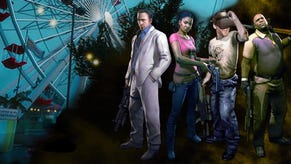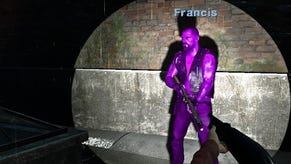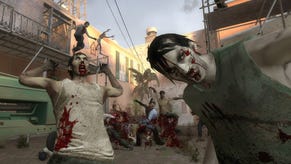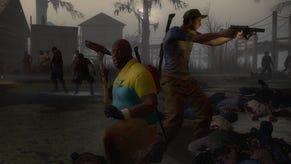Left 4 Dead 2
Southern fried gold.
The others go further. Hard Rain sees you fighting through a town one way and then fighting back through the same locations as a violent thunderstorm floods them. There are set-piece sections, like a sugar mill where Witches - who wander around in daylight rather than sitting down so you can avoid them - are gathered in numbers and the sun hangs low in the sky, often blinding you to their movements. The Parish, set in New Orleans, takes place completely during the day, and ends with the survivors fighting their way across a huge suspension bridge piled up with abandoned vehicles and disfigured by military airstrikes.
The decision to set much of Left 4 Dead 2 during the day is a big change (and a big challenge for Valve, because it's a lot easier to show people the way forward in the dark - you just strike a light), but my favourite campaign takes place in late evening. According to the developers, Dark Carnival went through numerous iterations before it made the cut, and the work has paid off, particularly in a chase up and around a wooden rollercoaster circuit, and in the pyrotechnic finale. There's more love here than almost anywhere else, especially in the Achievement-focused silliness involving the peanut man, his nemesis Moustachio and Gnome Chompski.
Were Left 4 Dead 2 merely Left 4 Dead set in these locations, it would still be worth playing, but it would also justify claims made by some of the first game's hardcore fans that the only reason there's a sequel rather than more downloadable content is the developer's bottom line. The fact that it's so much more than that almost makes you wonder how Valve got people so upset in the first place. All this stuff!

Like all the best things in the first game, the new stuff sounds simple but resonates across the whole. There are melee weapons, for example - swords, bats, bars, frying pans and even a chainsaw - and they're immediately crowd-pleasing, tearing up the infected like there's no tomorrow (although I suppose in an apocalypse there isn't) thanks to the improved limb loss. But they also solve a key problem with the first game, which was that you got frustrated when swamped by enemies, because you were only able to shove enemies away and attempt to shoot them once free. Now you can carve them up, and a melee weapon is often taken in preference to a pistol when the opportunity arises. Of course, this new close-quarters competency is carefully balanced so you don't gain too much of an advantage.
There are also three new special infected. Each has a specific role, and they interact with one other in maddeningly clever ways. The Spitter lays down intensely damaging green flob to burn away your health, while the Charger drags one of you away from the group at speed and then slams him or her up and down on the ground until help arrives. The new favourite though is the Jockey, a Gollum-like scamperer who clambers on a survivor's back and steers them into danger - perhaps into Spitter flob, or off a building. Hopefully Valve's merchandise department is already working on Jockey backpacks to replace our worn-out headcrab hats and Companion Cubes.
Elsewhere, specials and regular infected alike receive a boost in the new Realism mode, where people who played the original regularly will discover a distinctive new challenge. It removes various gameplay crutches, like the blue outlines showing you players' relative locations when they're outside your line of sight, and the halos around pickups. Meanwhile, zombies take a lot more ammo to go down unless you aim for the head. It's a different kind of difficulty level to the ones we're used to; rather than simply throwing more enemies at the survivors, it forces you to communicate with fellow players and pay attention to your surroundings to succeed.
















